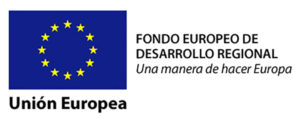Dispositivos en fibras especiales multimodo/multinúcleo para redes de comunicaciones y aplicaciones de sensores (DIMENSION)
| Global IP traffic will increase nearly threefold from 2016 to 2021. To avoid a 'capacity crunch', the researchers are striving to design network infrastructure that can carry more data, more efficiently than ever before and to reduce the energy footprint. The starting hypothesis taken by DIMENSION will be the consolidation and enhancement of the SDM technology (Spatial Division Multiplexing). DIMENSION will deal with the development of novel devices and techniques based on gratings and the benefits of the inherent parallelism SDM devices/fibres that can bring for the propagation and processing of signals (mainly focused on radio-over-fibre transmissions) and for novel techniques for sensors and spectroscopic measurements. The DIMENSION Project aims to develop novel devices and techniques based on multicore/multimode fibres and in-fibre gratings that can lead to systems with unprecedented performance, in order to meet the requirements of the ever increasing need of bandwidth and cost per bit reduction in optical networks and also for sensor applications. In doing so it addresses several challenges (Retos) as listed in the Plan Estatal de I+D+I. In particular it mainly targets the challenge Digital economy and society (Economía y Sociedad Digital). Optical networks based on SDM techniques and advanced remote sensor systems are instrumental to sustain the concept of internet of things, which lies at the heart of future internet (Internet del futuro). Specifically radio-over-fiber transmission and SDM fibres are a key enabler of 5G mobile systems and networks (Sistemas y redes móviles) but also of the concept of smart cities (Ciudades inteligentes) where citizens are permanently connected to services via wireless devices. In this last context, the advanced metrology techniques combining fiber optics and wireless systems are also fundamental as the can provide a low cost solution to continuous monitoring of civil structures and also environmental monitoring. The main technical objectives are: a) to develop concepts and benefits of space multiplexing for processing of analog and digital photonic signals and to support networking and new technologies for 5G front-hauling; b) to show that SDM technology can bring benefits to traditional applications that can take advantage for the inherent parallelism SDM devices/fibres like in: selected microwave applications including filtering, optical beamforming, generation of train of pulses and arbitrary waveform generation. c) to design and fabricate novel sensors using SDM technologies and to widen the range of application of optical fibre sensors; to implement novel fibre based spectroscopic measurement techniques for the characterization of sources that emit very weak signals. |
| Proyecto TEC2017-88029-R financiado por la Agencia Estatal de Investigación y cofinanciado con fondos europeos de desarrollo regional (FEDER). |





 This project has received funding from the European Horizon 2020 Programme for research, technological development and demonstration under grant agreement n° 825012 – 5G CARMEN
This project has received funding from the European Horizon 2020 Programme for research, technological development and demonstration under grant agreement n° 825012 – 5G CARMEN




